#skin: fossilized
Explore tagged Tumblr posts
Text

Brachylophosaurus skin impression found by Denver Fowler while prospecting
#more hadrosaur skin!#badlands dinosaur museum#dinosaurs#fieldwork 2024#palaeontology#paleontology#paleoblr#palaeoblr#fossils#fossil#science#Brachylophosaurus#judith river formation
735 notes
·
View notes
Text
Scaly or smooth? That has long been one of paleontology’s enduring questions about the plesiosaur. While experts know details about its diet, size, and general habitat, the aquatic reptile’s skin characteristics have remained a mystery. But for the first time ever, researchers at Sweden’s Lund University have analyzed a rare plesiosaur specimen’s fossilized soft tissue samples, and now believe they can finally answer the decades’ old question: In actuality, the 183-million-year-old dinosaur relative’s skin had a bit of both. “The classic life reconstruction of plesiosaurs (Plesiosauria), incorporating a long neck, compact body, and four propulsive flippers, has not changed for nearly 200 years. However, the actual external appearance of these famous Mesozoic reptiles is largely unknown,��� explained the team in their paper published on February 6th in the journal, Current Biology.
Continue Reading.
183 notes
·
View notes
Text

褐色肌でお前を世界の人気者にしてやるよ
#touhou#touhou project#fanart#nareko michigami#fossilized wonders#brown skin#東方#東方project#道神馴子#東方錦上京#褐色肌#イラスト
103 notes
·
View notes
Text
353 notes
·
View notes
Text

No I'm pretty sure I'm onto something here.....
#i'm imagining gold lace appliques and embroidery over red sheer veils#fossilized wood brooches and pins used to hold the shaping#garnet and green amber jewelry#'liquid gold' and 'blood and gore' aesthetics on bare skin#yall imma look so goddamnhot#finally i get to play the fertility goddess these hips were always meant for#this shoot is going to both be such a highly soecific aesthetic#and also cover such a WIDE array of fetishes lmfao#god maybe this is what finally gets me to make a fetlife lmfao if only to try and coordinate the shoot lmao
9 notes
·
View notes
Text
There Were Elephants Here Before
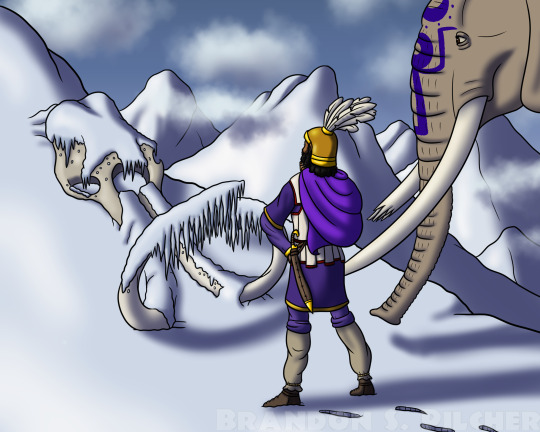
While crossing the Alps in 218 BC, the great Carthaginian general Hannibal Barca has stumbled upon the skull of a woolly mammoth half-buried in the snow. Given the difficulty his own animals have experienced in enduring the montane cold, he wonders how elephants could ever be native to these frigid heights deep in Europe.
This is of course a speculative scenario, but woolly mammoth remains have actually been found in the Alps on several occasions, so I think it’s theoretically possible for Hannibal or people in his army to have found some on their trek.
#hannibal barca#hannibal#ancient carthage#carthaginian#north african#african#ancient#black man#dark skin#elephant#african elephant#woolly mammoth#mammoth#fossil#alps#history#digital art#art
31 notes
·
View notes
Text
maybe im just late to the metaphorical party but i just found out that apparently early research on microraptor which said that it could only glide due to weak chest muscles isn't correct??? and that it could actually fly like most modern flying birds????? and of course there was that insane research which, correctly as far as we know, found out that microraptor had slightly iridescent and shiny black feathers like crows and magpies do??? which apparently means that they would've probably hunted in the day????? thats so fucking cool what the hell. i love research and archaeology. and being around in a time when we can find out things like this
#in a similar vein: that insanely intact ankylosaur fossil#that was found a year or so ago with SKIN STILL INTACT#paleontology my beloved <3#microraptor#paleontology
7 notes
·
View notes
Text

me and my besties mc skins
we both play on the official fossils and archaeology server!
16 notes
·
View notes
Text

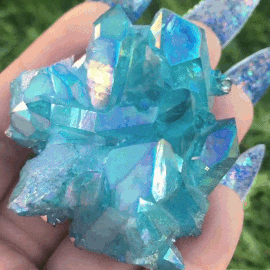

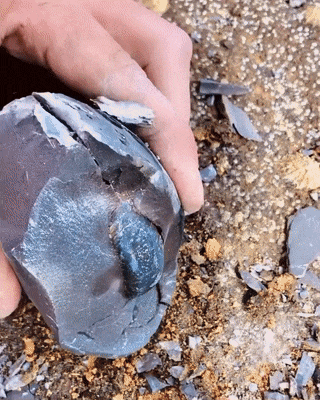

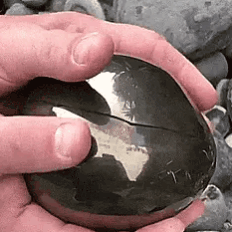

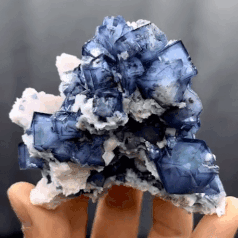


Empires S2 Pixlriffs and Fwhip Stimboard for @beeigobuzz
|| 💎 | 💎 | 💎 || 💎 | 💎 | 💎 || 💎 | 💎 | 💎 ||
#empires smp#empires s2#stim#stimboard#stims#blue#white#black#brown#mcyt#mcyt stimboard#empires stimboard#pixlriffs#fwhip#empires fwhip#empiresblr#moth#insects#gems#crystals#fossils#sky#night sky#stars#light blue#dark blue#•ghost#didnt know what skins to use so i just took what was on the wiki#tw flashing
19 notes
·
View notes
Text
6 notes
·
View notes
Text
///making more icons today. Might play some modded minecrwaft with friends. But if anyone wants to message me for plotting I'm always down. =)
#bark bark bark ii out of character#tbd;#///inuyasha minecraft skin but im raising minecraft dinosaurs from fossils.
2 notes
·
View notes
Video
youtube
How Does A Homing Pigeon Know Where To Go? | Ask Hank Anything by Complexly
#youtube#ask hank anything#hank green#vlogbrothers#michelle khare#science#birds#soap#skin#days#astronomy#fossils#coral#pidgeons#best ep yet
5 notes
·
View notes
Text
Skin is hard to find in the fossil record. The outer flesh of ancient organisms is much more prone to being eaten by scavengers or rotted away than sturdy bones are. But sometimes paleontologists get a lucky break. Within the roughly 288-million-year-old recesses of a cave in Richards Spur, Oklahoma, paleontologists have found truly ancient fossil skin impressions that were preserved in a very unusual way. Described Thursday in Current Biology, these tatters of fossil skin and various skin impressions come from some of the earliest amniotes. The lizard-like animals were some of the first creatures to live their entire lives on dry land, away from the water’s edge, and their bodies were covered in pebbly, scaly skin. The newly uncovered fossils are the oldest record of preserved skin yet found, about 130 million years older than the previous record holder, containing not only the exterior texture of the skin but also the internal structure of the epidermis.
Continue Reading.
104 notes
·
View notes
Text
New fossil brings us a step closer to unravelling the mystery of feather evolution
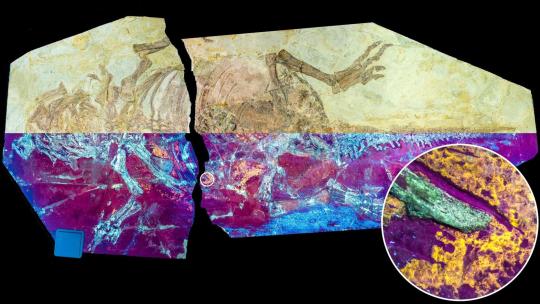
- By Zixiao Yang , Maria McNamara , University College Cork , The Conversation -
Strong but light, beautiful and precisely structured, feathers are the most complex skin appendage that ever evolved in vertebrates. Despite the fact humans have been playing with feathers since prehistory, there’s still a lot we don’t understand about them.
Our new study found that some of the first animals with feathers also had scaly skin like reptiles.
Following the debut of the first feathered dinosaur, Sinosauropteryx prima, in 1996, a surge of discoveries has painted an ever more interesting picture of feather evolution.
We now know that many dinosaurs and their flying cousins, the pterosaurs, had feathers. Feathers came in more shapes in the past – for example, ribbon-like feathers with expanded tips were found in dinosaurs and extinct birds but not in modern birds. Only some ancient feather types are inherited by birds today.
Paleobiologists have also learnt that early feathers were not made for flying. Fossils of early feathers had simple structures and sparse distributions on the body, so they may have been for display or tactile sensing. Pterosaur fossils suggest they may have played a role in thermoregulation and in colour patterning.
Fascinating as these fossils are, ancient plumage tells only part of the story of feather evolution. The rest of the action happened in the skin.
The skin of birds today is soft and evolved for the support, control, growth and pigmentation of feathers, unlike the scaly skin of reptiles.
Fossils of dinosaur skin are more common than you think. To date, however, only a handful of dinosaur skin fossils have been examined on a microscopic level. These studies, for example a 2018 study of four fossils with preserved skin, showed that the skin of early birds and their close dinosaur relatives (the coelurosaurs) was already very much like the skin of birds today. Bird-like skin evolved before bird-like dinosaurs came around.
So to understand how bird-like skin evolved, we need to study the dinosaurs that branched off earlier in the evolutionary tree.
Our study shows that at least some feathered dinosaurs still had scaly skin, like reptiles today. This evidence comes from a new specimen of Psittacosaurus, a horned dinosaur with bristle-like feathers on its tail. Psittacosaurus lived in the early Cretaceous period (about 130 million years ago), but its clan, the ornithischian dinosaurs, diverged from other dinosaurs much earlier, in the Triassic period (about 240 million years ago).
In the new specimen, the soft tissues are hidden to the naked eye. Under ultraviolet light, however, scaly skin reveals itself in an orange-yellow glow. The skin is preserved on the torso and limbs which are parts of the body that didn’t have feathers.
These luminous colours are from silica minerals that are responsible for preserving the fossil skin. During fossilisation, silica-rich fluids permeated the skin before it decayed, replicating the skin structure with incredible detail. Fine anatomical features are preserved, including the epidermis, skin cells and skin pigments called melanosomes.
The fossil skin cells have much in common with modern reptile skin cells. They share a similar cell size and shape and they both have fused cell boundaries – a feature known only in modern reptiles.
The distribution of the fossil skin pigment is identical to that in modern crocodile scales. The fossil skin, though, seems relatively thin by reptile standards. This suggests the fossil scales in Psittacosaurus were also similar in composition to reptile scales.
Reptile scales are hard and rigid because they are rich in a type of skin-building protein, the tough corneous beta proteins. In contrast, the soft skin of birds is made of a different protein type, the keratins, which are the key structural material in hair, nails, claws, hooves and our outer later of skin.
To provide physical protection, the thin, naked skin of Psittacosaurus must have been composed of tough reptile-style corneous beta proteins. Softer bird-style skin would have been too fragile without feathers for protection.
Collectively, the new fossil evidence indicates that Psittacosaurus had reptile-style skin in areas where it didn’t have feathers. The tail, which preserves feathers in some specimens, unfortunately did not preserve any feathers or skin in our specimen.
However, the tail feathers on other specimens show that some bird-like skin features must have already evolved to hold feathers in place. So our discovery suggests that early feathered animals had a mix of skin types, with bird-like skin only in feathered regions of the body, and the rest of the skin still scaly, like in modern reptiles.
This zoned development would have ensured that the skin protected the animal against abrasion, dehydration and pathogens.
What next?
The next knowledge gap for scientists to explore is the evolutionary transition from the reptile-style skin of Psittacosaurus to the skin of other more heavily feathered dinosaurs and early birds.
We also need more experiments studying the process of fossilisation itself. There is a lot we don’t understand about how soft tissues fossilise, which means it is difficult to tell which skin features in a fossil are real biological features and which are simply artefacts of fossilisation.
Over the last 30 years, the fossil record has surprised scientists in regard to feather evolution. Future discoveries of fossil feathers may help us understand how dinosaurs and their relatives evolved flight, warm-blooded metabolisms, and how they communicated with each other.
Zixiao Yang, Postdoctoral researcher, University College Cork and Maria McNamara, Professor, Palaeobiology, University College Cork
This article is republished from The Conversation under a Creative Commons license. Read the original article.
--
Header image: The studied Psittacosaurus under natural (upper half) and UV light (lower half). Credit: Zixiao Yang (author provided).
Read Also
Evolution: Primitive fish fossils reveal origins of teeth
5 notes
·
View notes
Text
op this shit was VIVID (trigger warning: op's post contents - some gore/blood and blurry/implied animal bodies)





(other than the bright reds and the white in the last panel, everything was color picked from my dash with how i saw the post, greens/browns/low contrast reds were all from op's avatar :3 was trying to keep As Much of the vibe as possible)

Geological horror. You find a geode and crack it open and the crystal lining its walls is human blood that can't be genetically matched to anyone. You find a human skeleton but every one of the bones is made from rock, a rock that you know can't be whittled into those shapes. You find layers of clay and loam that sport ancient fossils at the top and the still-rotting corpses of modern animals at the bottom.
#hi im back!!#did part of this last night but it was quickly spiraling out of control and also like 230am lol#I SO FULLY EXPECTED TO JUST *SEE* THIS AS I CONTINUED SCROLLING DOWN THE POST BUT IT WASNT THERE YET?? SO?????#funnily enough this is *not* what i pictured when i first saw it lol not entirely anyway#i was picturing this as a sort of golem creatures remains that are found and the geode is the heart inside the stone ribcage and then#the outter layers around the skeleton of like 'skin/muscles/fat' etc for the body was the layers of claay and loam with fossils#which then made me think it was fuckin MASSIVE lmao#but that one im pretty sure i wouldnt have been able to draw the way i wanted to and i was desperate to finish this one if at all possible#geologists i am so sorry if thats not what a cracked geode looks like i was scared if i looked at ref i would be intimidated and not even#get through the first page LOL i did look at fossil skeletons tho that part was fun:3333#can you tell i was dying by the last panel lmao#but also it works cos i wouldnt want to draw that in focus that graphic anyway ;w; even tho it would work better with the comic..#anyway im just happy i finished it#messy af and should be better but idc😤😤 tumblr comic tm COMPLETED#just me#doodles#comic#geologists#geodes#fossils#ANYWAY HI IF YOURE STILL HERE I HAVE A KOFI AND DO COMMISSIONS EHEHEEE#mayhaps ill post links w a speedpaint.. cos this was honestly kind of the first time i let myself Really backtrack while draawing something#theres the undo button ofc#ill redo the same curved line over and over until the slope is just right lol#but as far as like..just *erasing* whole areas ive been working on for a while or deleting the entire layer and starting over#if i thought of something that would fit a little bit better#i wana see that recording👀#sorrryyyyyyy for the style shifts lmao im pretending its intentional#cos tbf some of it is just not all of it lol ^-^'#described
128K notes
·
View notes
Text
A Past King of Haiti

It’s the dawn of the 19th century, and the recently liberated Republic of Haiti is under attack by its former French overlords, who seek to reconquer the Caribbean nation and force its people back into slavery. In a desperate search for aid, a Haitian voodoo priestess has descended into the island’s bowels, uncovering the fossilized remains of a long-deceased apex predator whom she hopes to resurrect so it can help her people defend their newly won freedom.
It’s a fanciful scenario, I admit, but given that many of the Caribbean islands are thought to have emerged during the Cretaceous Period (including Hispaniola, the island on which stand the countries of Haiti and the Dominican Republic), it seems conceivable to me that some dinosaurs from the North American mainland could have found their way to those islands, depending on well they could swim. As of this writing, it remains to be seen whether we will ever uncover any of their fossils.
#Haitian Revolution#Haitian#Voodoo#Voodoo Priestess#caribbean#black woman#woman of color#dark skin#tyrannosaurus rex#dinosaur#fossil#dinosaur bones#digital art#art
3 notes
·
View notes